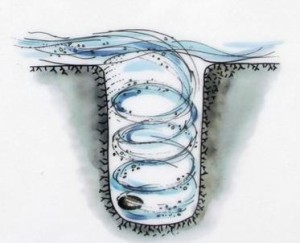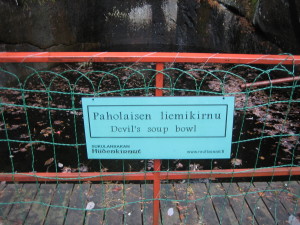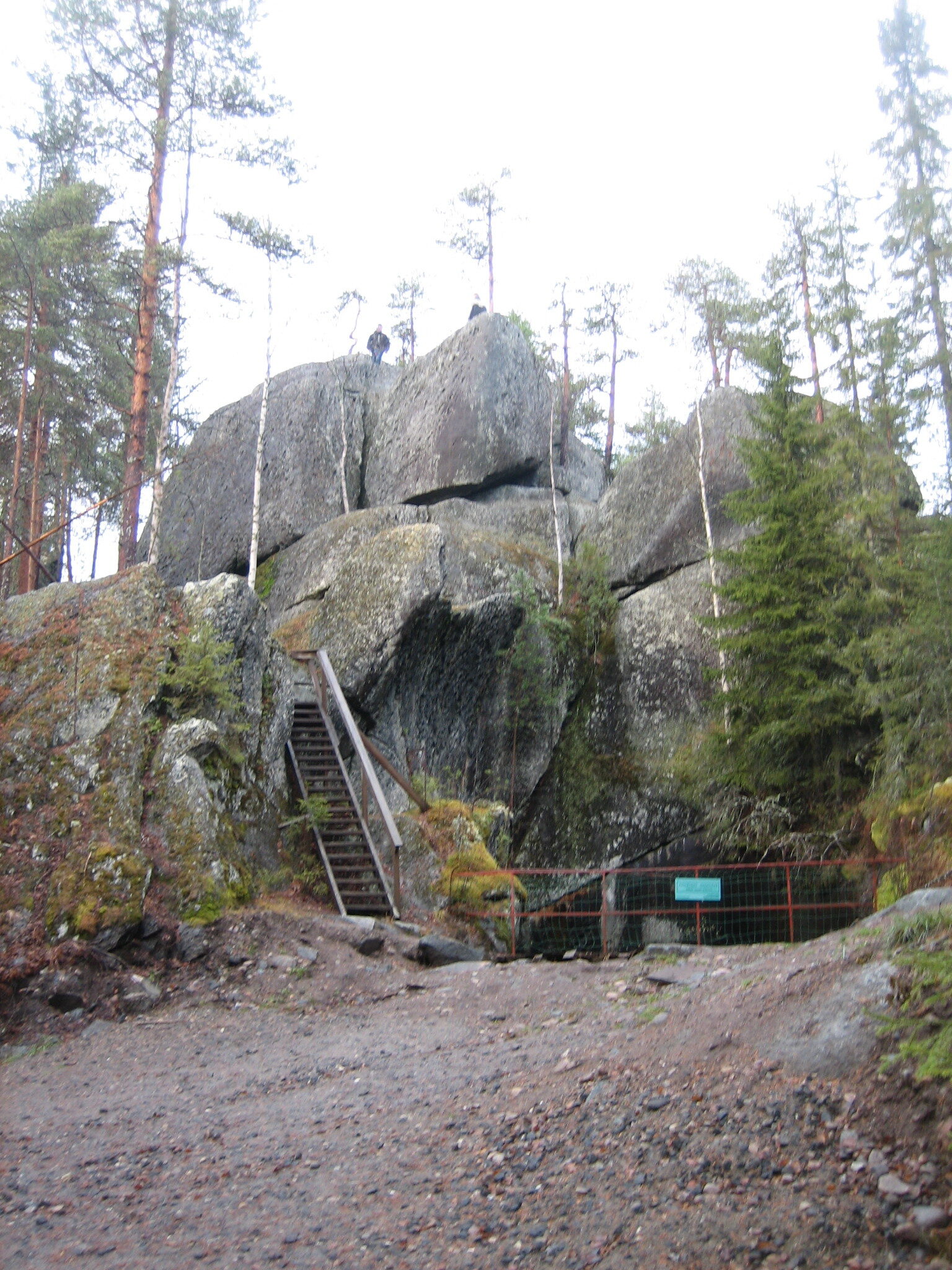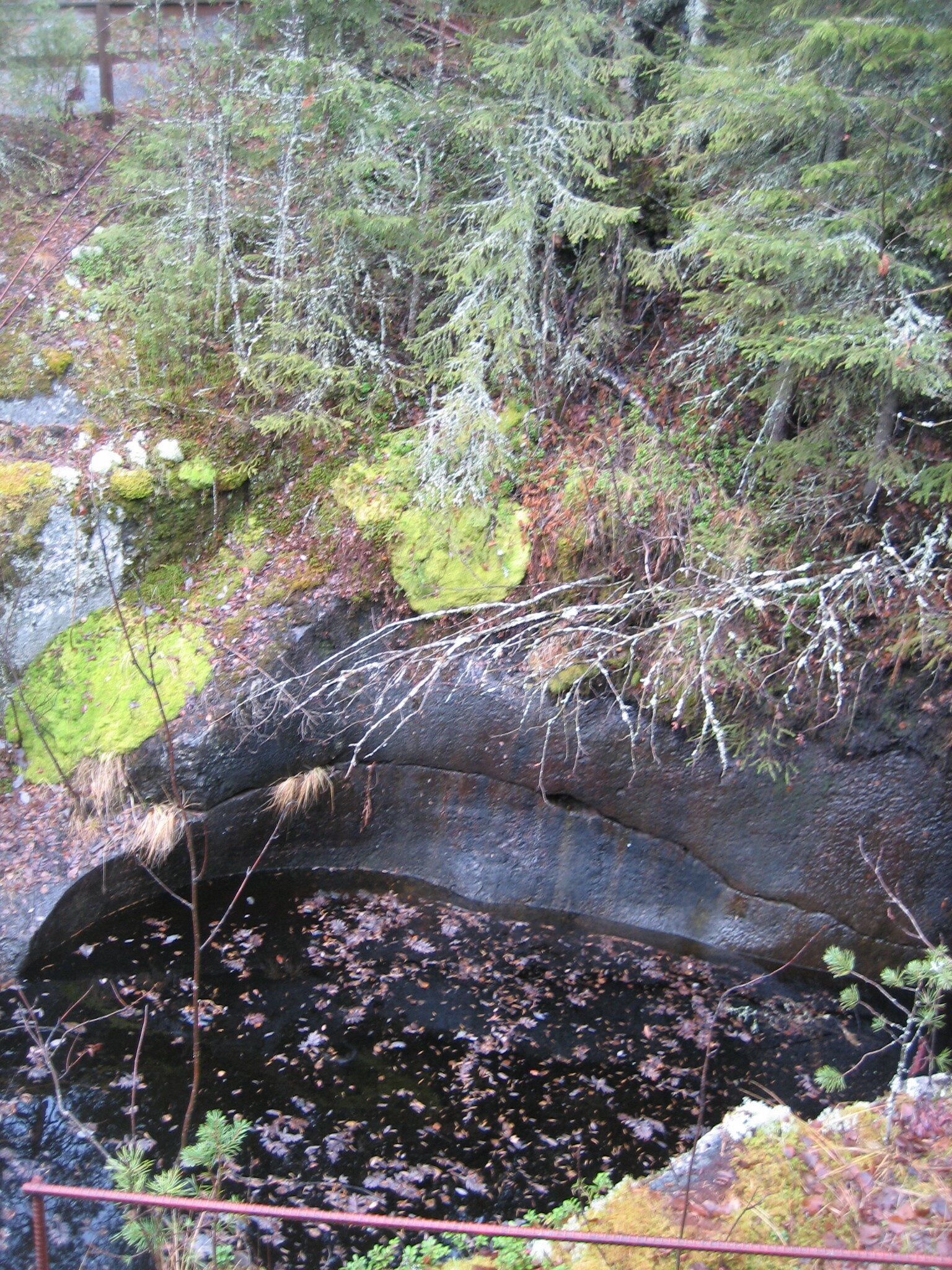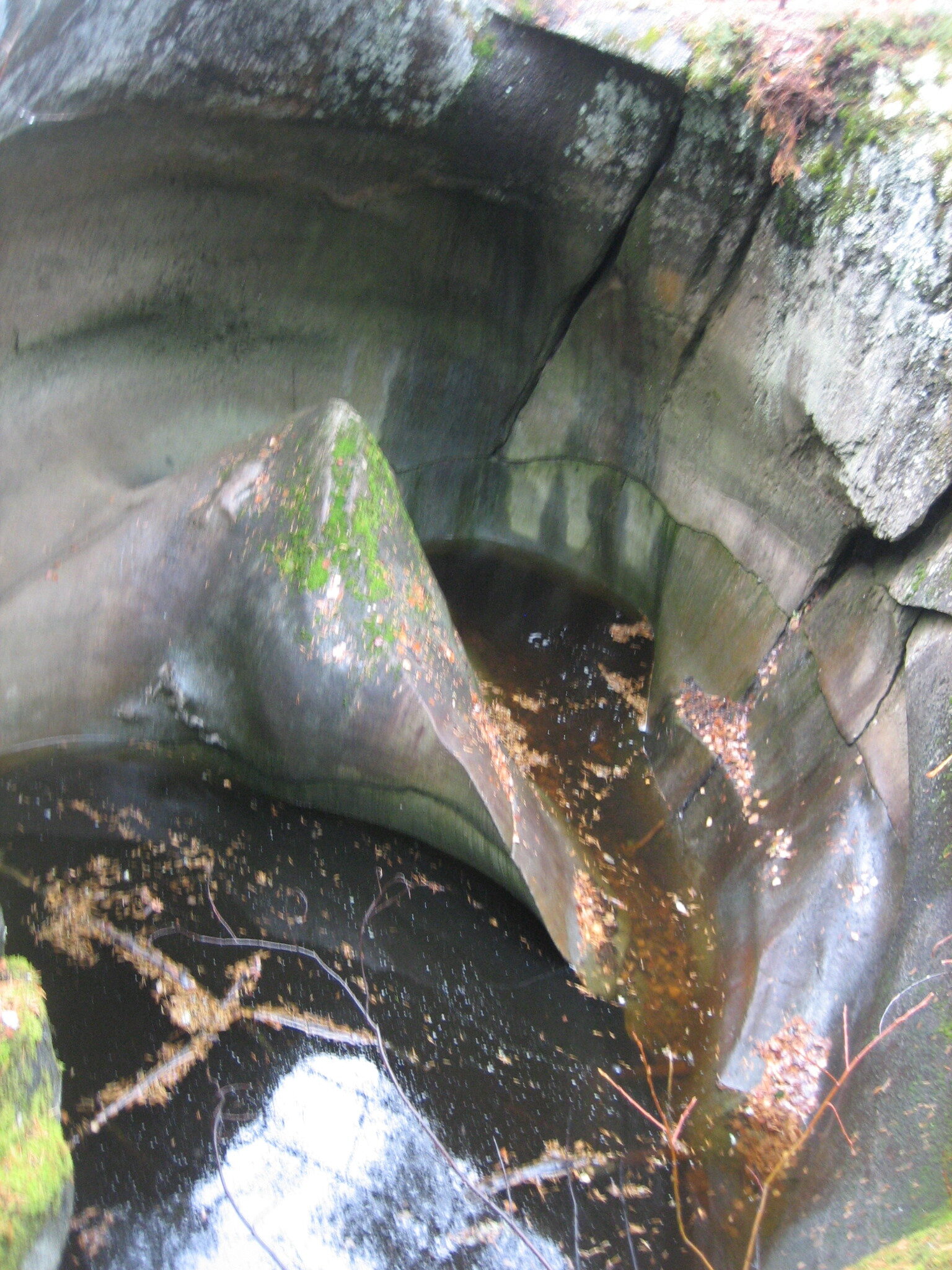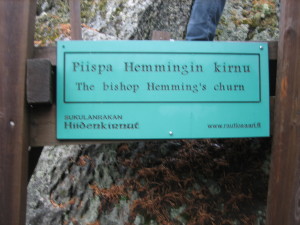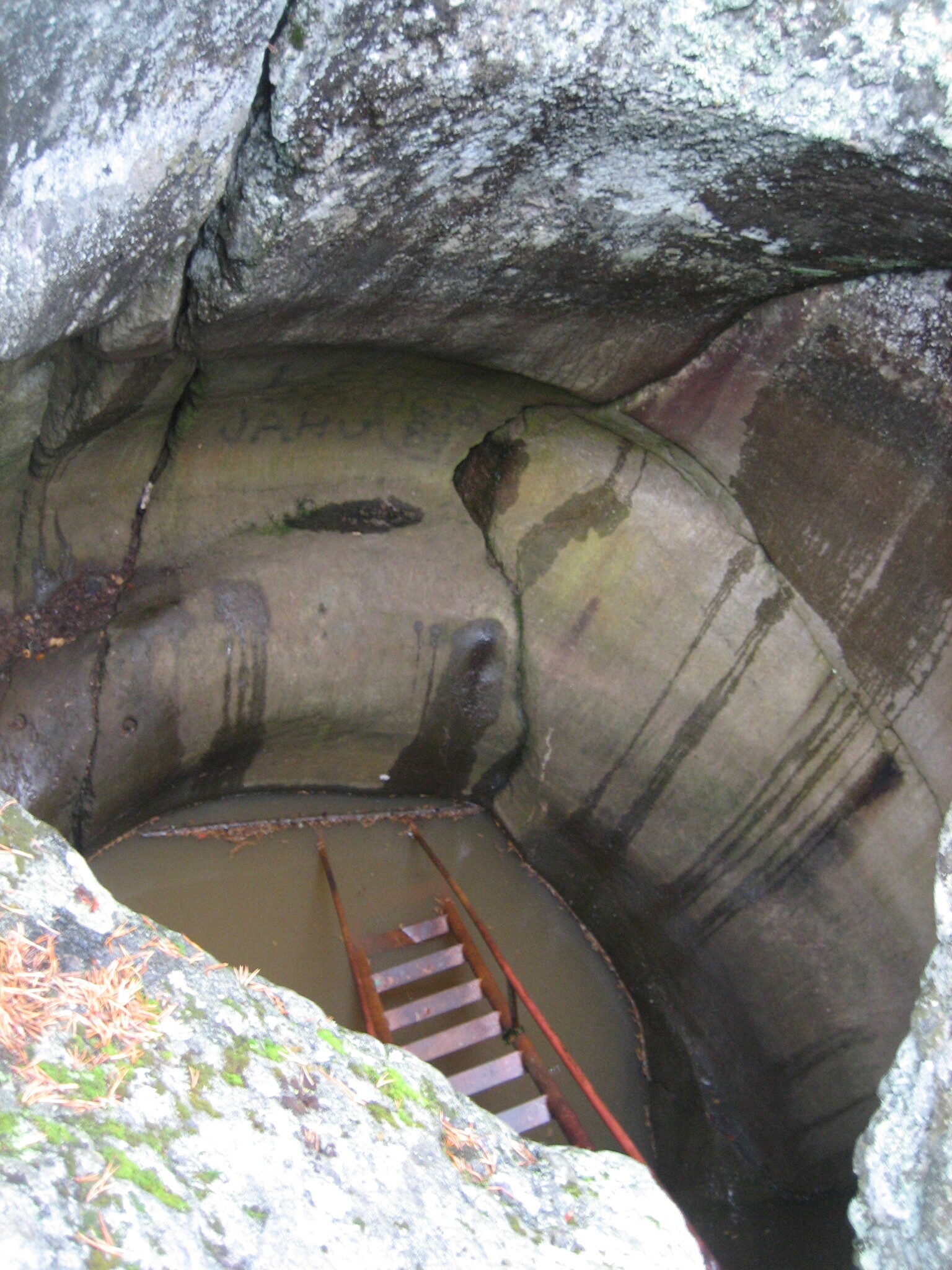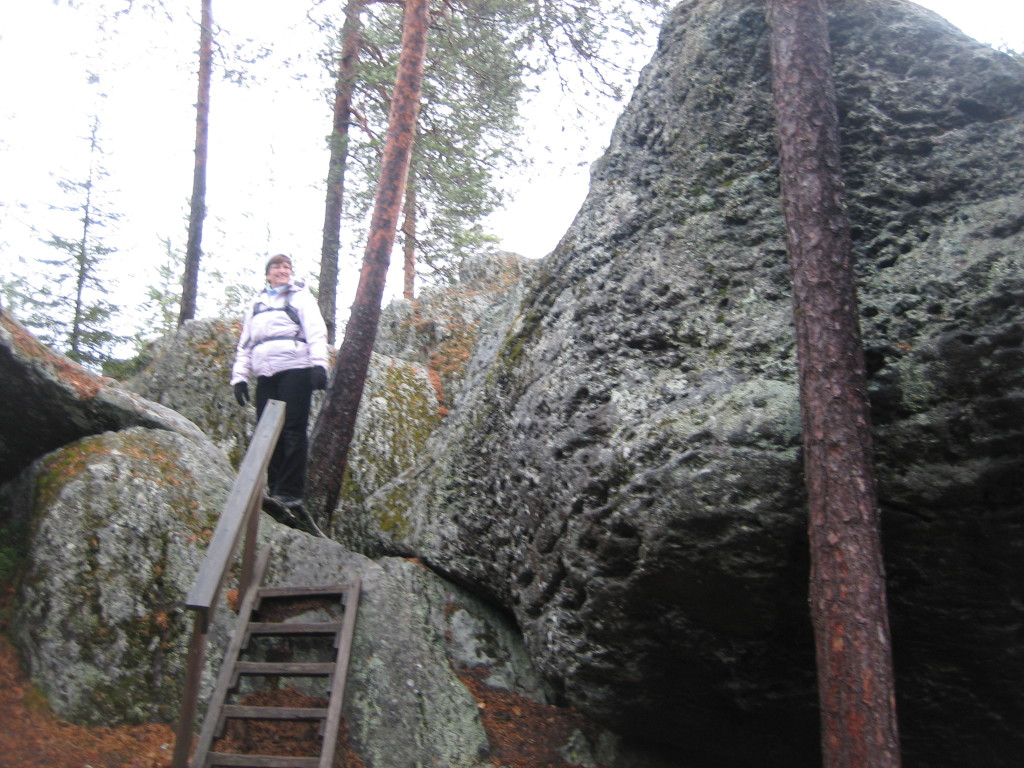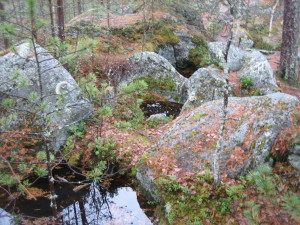These potholes were created around 10,000 years ago, on the fringes of the melting continental ice sheet, by powerful meltwater flows which eroded the rock. Rocks and stones were swept away by fast flowing meltwater gushing through tunnels at the base of the glacier. In the case of Sukulanrakka, the meltwater also swept away the soil covering the rocky outcrops. As powerful eddies developed in the meltwater tunnels, the boulders carried by the flood began to swirl. Under the power supplied by the water, the rocks and boulders drilled down to the rock face underneath, creating round potholes known as ‘devil’s churns.’ Most of the rock material carried along by the meltwater accumulated to form a ridge running in the direction of the tunnel.
There are 14 ‘devil’s churns,’ or potholes, on the rocky slopes of Sukulanrakka close to the village of Rautiosaari, around 25 km from Rovaniemi city centre.
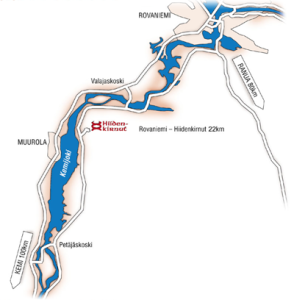
These potholes were created around 10,000 years ago, on the fringes of the melting continental ice sheet, by powerful meltwater flows which eroded the rock. Rocks and stones were swept away by fast flowing meltwater gushing through tunnels at the base of the glacier. In the case of Sukulanrakka, the meltwater also swept away the soil covering the rocky outcrops. As powerful eddies developed in the meltwater tunnels, the boulders carried by the flood began to swirl. Under the power supplied by the water, the rocks and boulders drilled down to the rock face underneath, creating round potholes known as “devil’s churns”. Most of the rock material carried along by the meltwater accumulated to form a ridge running in the direction of the tunnel.
Due to their depth, three of these are counted among Finland’s largest potholes. The largest, “Devil’s soup bowl” lies at the foot of the hill and has partly collapsed. It is 8 metres in diameter and 15 metres deep.
Two other devil’s churns, the Big Demon’s hide and Bishop Hemming’s churn, with depths of 9 and 10 metres, are located on top of the rock face.
Here are a couple of stones from the giant kettles. 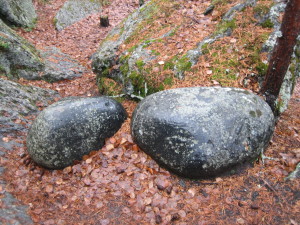
You can visit the area on your own risk, but there are stairs to use when you move up and down the giant stony area.
Three smaller churns in the area.
A picture from once when the churns were emptied and cleaned. 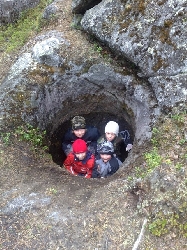
Here is a map of the area, where you can find the 14 devil’s churns.
The devil’s churns at Sukulanrakka have been known to local people for centuries. Many folk-tales have been told about these mysterious pot holes and about a demon who lived in these parts long ago.
When the demon heard that a Swedish bishop and his entourage were coming to convert the local people living along the river Kemijoki from their pagan ways. he resolved to get rid of these unwelcome visitors once and for all. He collected a huge pile of rocks, stones and arrows, and waited in ambush in a deep hole he dug himself in the bare rock. In the bottom of this devil’s churn the demon also brewed up a noxious potion to use against the invaders
There was a bitter struggle, as can still be seen from the massive boulders known locally as devil’s boulders which lay strewn around the area to this day. But in spite of all his weapons and his evil spells, the demon was defeated, and fled westwards over the Kemijoki river.
The devil’s churns at Sukulanrakka were first investigated in depth in 1966 and 1967, when the debris that had accumulated in them over the millennia was cleared out with the help of local residents, under the supervision of Professor Veikko Okko of Helsinki University.

